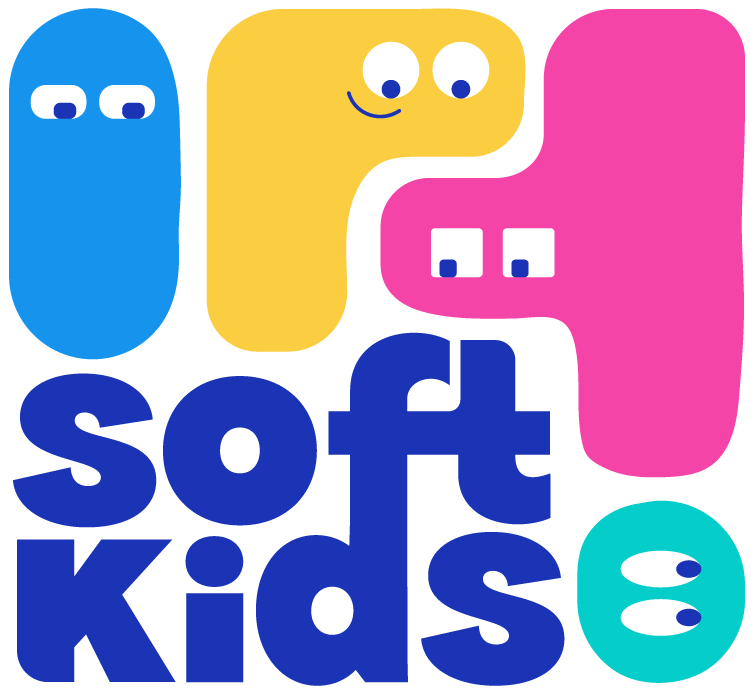All Saints' Day is here, and with it comes the question that many parents dread: how do we talk to our children about death? Between our own discomfort and our desire to protect them, we hesitate, avoid and put it off. Yet talking to them about death is not only necessary, it's also a great opportunity to help them understand the world.
Between Halloween pumpkins and chrysanthemums at the cemetery, our children are confronted with symbols. It's the perfect time to open a dialogue on a subject that our French society tends to avoid.
Adults have long thought that certain subjects, such as death, are "grown-up stuff", too complex or too heavy for children. We underestimate their ability to understand, feel and integrate difficult information.
The result? We create a heavy silence around death, which generates more anguish than protection.
The All Saints' Day period, with its November 1st holiday dedicated to the memory of the deceased, provides a natural setting for calmly broaching this subject with our children. Rather than waiting for a tragedy to occur before talking about it in an atmosphere of urgency and emotion, why not take a preventive approach?
Why is death still a taboo subject?
The cultural weight of silence
Unlike other countries, notably Quebec, where there are many accessible resources for children on the subject of bereavement, some countries, such as France, find it difficult to tackle the question of death head-on with their youngest readers. At the Salon du livre et de la presse jeunesse in Montreuil, foreign publishers regularly note that French professionals are particularly keen to find content on these "taboo" subjects.
Why this difference? In France, we tend to think that everything has to come from adults, that they have to master the subject before passing it on. We want to protect our children from negative emotions, which is normal, but not necessarily desirable.
Our own fears hold us back
Let's be honest: if we avoid the subject, it's also because, as adults, we don't necessarily want to anticipate the loss of a loved one. Talking about death forces us to project ourselves into painful situations. It's like avoiding a dreaded medical appointment: we miss the problem rather than confronting it.
Yet this anticipation is invaluable. It helps prepare our children, giving them the tools to understand and manage their emotions on the day they face loss.
What children really understand about death
They are able to understand
Children understand much more than we think. From an early age, they pick up on emotions, silences and things left unsaid. When the truth is hidden from them, they feel it anyway, but they can't put it into words. This lack of understanding generates anxiety.
Psychologists confirm that a child who receives age-appropriate explanations feels more secure than one who is kept in the dark. It's not a question of saying everything bluntly, but of finding the right words at the right time.
The importance of naming things
Rather than saying "Grandma's gone" or "Grandpa's gone to sleep", it's better to use the real words: death, death, dying. Euphemisms can create confusion and even new fears. A child who hears "he fell asleep" may develop a fear of falling asleep himself.
Using the right words opens the door to mutual understanding and enables the child to express his or her feelings.
All Saints' Day: a time for dialogue
Taking advantage of the cultural context
Why is November 1st a public holiday? What does All Saints' Day mean? Why are flowers laid at the cemetery? These are just a few of the simple questions that can serve as a gateway to a calmer approach to the subject of death.
This cultural and family context provides a reassuring framework for talking about death without emotional urgency. We can explain that it's a time to remember loved ones, to honor their memory.
Prevention rather than emergency
Waiting until a tragedy occurs to talk about death means having to manage your own emotions while accompanying those of your child. It's possible, but it's much more difficult.
By broaching the subject early on, in a quiet moment, we give our children reference points that will help them the day they are faced with a real loss.
Tools for dealing with grief with children
Books: precious allies
Children's literature offers wonderful resources for dealing with grief. Books like Aimée Verret's "Le deuil raconté aux enfants" offer a two-step approach:
A story with which the child can identify, often centered on the loss of a pet (pet bereavement being the most common form of bereavement among children)
An informative section that explains in concrete terms what happens in the body and in the heart, the different funeral rites according to culture, and the gestures that can be made to get through grief.
These books take a fictional approach to the subject, creating a reassuring distance. Children can ask questions about the character before talking about themselves or their own concerns.
Understanding the mourning curve
A particularly useful tool to help children understand what they're going to feel: the mourning curve. It explains the different phases:
-
The shock the moment you hear the news
-
Denial the difficulty of believing
-
Anger Why this person? Why now?
-
Sadness the moment of deep sorrow
-
Acceptance when you learn to live with this absence
-
Reconstruction when you reorganize without the missing person
Explaining that these emotions are normal, that they come and go, helps children not to feel lost in their feelings.
Concrete gestures to support
Children need concrete gestures to help them through their grief:
-
Drawing the missing person
-
Writing a letter
-
Plant a tree in his memory
-
Create a memory box
-
Looking at photos together
-
Telling stories
These actions help transform grief into something tangible, something we can share.
Halloween and death: taming fear through play
Catharsis through disguise
Halloween, a festival of Irish origin, offers an interesting opportunity to tame fear in a fun and safe way.
When a child dresses up as a skeleton, ghost or frightening creature, they gain a certain power over what frightens them. This is what we call catharsis: expressing and mastering negative emotions through play.
Content for all ages
Halloween films, books and programs offer different levels of "fright", adapted to each age group. This gradation enables children to gradually explore their fears, talk about them with adults, and better understand what makes them anxious.
Fear, when tamed in a safe environment, becomes an emotion that can be understood and managed.
Mistakes to avoid when talking about death
Don't impose your vision
Every family has its own beliefs, religious or otherwise, about what happens after death. The important thing is to remain consistent with one's values, while leaving room for the child's questions.
Avoid explanations that are too complex or abstract for young children. "The sky", "the stars", "heaven": these images can be beautiful, but make sure your child really understands them.
Don't minimize grief
"It's only a goldfish", "You'll get another one"... These phrases, even when spoken with kindness, can make a child feel that his grief is not legitimate.
Every loss deserves to be taken seriously. There is no hierarchy of grief. Grieving the loss of a pet can be a child's first contact with death, and is an important stage in his or her emotional development.
Do not lie or use misleading euphemisms
"He's gone on a trip", "She's sleeping forever"... These formulas create confusion. The child waits for the person to return, or develops a fear of falling asleep.
The truth, told in words appropriate to the child's age, is always preferable to a lie, no matter how benevolent.
Adapt your speech to the child's age
Before 5 years
Toddlers don't yet understand the finality of death. They may ask the same question several times: "When is Grandpa coming back?"
Be patient, repeat explanations using the same simple words. Use comparisons with nature: leaves falling in autumn, flowers wilting.
Between 6 and 10 years
At this age, children begin to understand that death is irreversible. They can ask a lot of concrete questions: "What happens in the body?", "Does it hurt?", "Am I going to die too?"
Answer honestly, without going into too much medical or scary detail. Reassure them that most people live a very long time.
From age 11
Pre-teens and teenagers have a mature understanding of death, but can develop existential anxieties. They can be rebellious, sad or, on the contrary, seemingly detached.
Remains available for discussion, without forcing it. Suggests resources (books, podcasts) that they can explore on their own if they don't feel comfortable talking directly.
TO REMEMBER
✔️ Children understand more than we think Talking about death reassures rather than frightens them
✔️ Use real words Avoid confusing euphemisms
✔️ All Saints' Day is a propitious time Take advantage of this cultural context to open a dialogue
✔️ Books are invaluable allies they provide a fictional approach to the subject
✔️ Explaining the grief curve Helping children understand how they will feel
✔️ Suggest concrete gestures drawing, writing, creating memory rituals
✔️ Age-appropriate communication each stage of development requires different explanations
Death is part of life, and talking about it with our children is not morbid: it prepares them to face the trials they will encounter with serenity.
And if you're looking for resources to support you, don't hesitate to turn to specialized children's literature or listen to the full episode of the "Generation Parents" podcast on the subject.
Because a child who understands is a child who is reassured. And a parent who dares to speak up is a parent who truly supports.
Want to go further? Discover our Soft Kids app, which offers modules on emotional management and resilience, essential skills for accompanying our children through all life's trials and tribulations.




0 comments